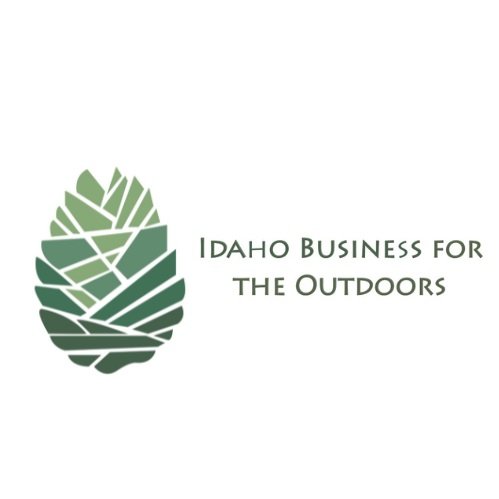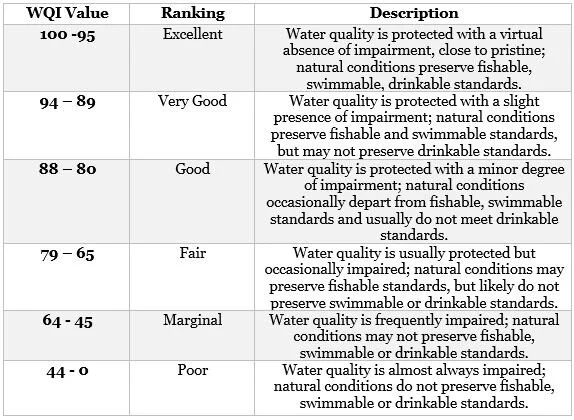Idaho Business for the Outdoors brought renowned swimmer and water quality advocate, Christopher Swain, to Idaho to swim the Boise River: Source to Snake in August. We supported an approximately 150-mile water engagement journey. Swain was our lead swimmer, but we wanted to create a community-wide engagement effort to celebrate the ecological, economic and social value the Boise River provides to the many communities it sustains. We collaborated with schools, businesses, community leaders, mayors, other nonprofits and members of the public to help support water quality education and support for work still needed to create a fishable, swimmable and drinkable Boise River.
Christopher Swain swimming Redfish Lake to access trailhead to the Boise River’s source water, high in the Sawtooth Mountains
Our journey started at Redfish Lake under a red flag storm alert due to threats of a lightning storm. Confronted by a big lake between himself and a trailhead, what does a swimmer who has swum over 3,000 miles to put waterways in the spotlight do? He swims. Swain has survived class IV rapids, electrical storms, twelve foot waves, logjams attacks, raw sewage discharges, oil spills, water contaminated with PCBs, attacks by blood-sucking Lamprey Eels, nuclear waste and electrical storms. The threat of an impending storm, didn’t deter him. He jumped in, swimming the length of Redfish Lake in under two hours, to access the trailhead where he joined by two long-time Idaho educators: Dick Jordan (also IBO’s Education Director) and Dough Stan, as well as two College of Idaho science students responsible for water testing: Melissa O’Berto and Natalie Little. Pack horses traveled with them up to Alice Lake carrying wet suits and water testing gear. All marveled at the startling clarity of Spangle Lake and Swain was able to convince all on team wilderness to jump in for a swim..
After a chilly second night in the wilderness trying to sleep through a booming thunderstorm, the team followed a narrow trail and stream out of Spangle Lake which made its precipitous drop down the mountain, winding and jettisoning its way over rocks and steep ravines and through still more stunning wilderness all the way into the town of Atlanta.
This is where one might say the Boise River’s storied origins as a working river begins. Gold was discovered in Atlanta in 1863. Today, Atlanta is one of the West's most remote, and most beautiful and productive historic mining towns. It is estimated that over $16,000,000 dollars in gold and silver was mined in the district. From there it spills off of Kirby damn, which supplies power to the town of Atlanta and heads west to meet North Fork of the Boise River near Willow Creek Campground. This is where the Boise River officially begins and where Christopher Swain set down his backpack and officially started swimming, at times bumping his way across rocks on a boogie board when necessary, in order to stay wet and afloat.
Swain kept a remarkably ambitious pace swimming across Arrowrock, Lucky Peak, down to Discovery Park, through Boise, Eagle and Caldwell, all the way to Parma and the Boise River’s confluence at Martin’s Landing. Along the way he stopped and chatted with fishermen, families, home owners and kids. While Swain swam, College of Idaho science students finished water testing at the 15 different test sites, conducting and collecting test results for temperature, pH, conductivity, turbidity, nitrate, phosphate, BOD and fecal coliform that could later be used to calculate the rivers Water Quality Index (WQI). Our IBO team stayed busy supporting Swain’s daily swim logistics and the events we planned to drive community action and engagement.
Below are some of the wins and highlights of this month long water journey and our commitment to supporting August as Boise River Action Month which we were able to get all eight mayors along the Boise River to sign. Please find as well the snapshot of Team STREAM’s WQI results. We have much to celebrate, share and continue to advance when it comes to fishable, swimmable and drinkable waters! Here are some event highlights:
Retired Chemistry teacher and IBO member, Robert Beckwith leading the drinkable water quality station at Discovery Park with Idaho City and Borah High School
High School students looking at macro invertebrates with Augie Gabrielli - Water Education Coordinator, Boise WaterShed
All eight mayors along the Boise River signed a Joint Proclamation declaring August, Boise River Action month in support of fishable, swimmable and drinkable water. Thank you to Mayor Bieter of Boise, Mayor Nanucles of Caldwell, Mayor Ridgeway of Eagle, Mayor … of Garden City, Mayore of Meridian, Mayor of Middleton, Mayor of Parma, Mayor of Star
Safe passage of Christopher Swain and Team STREAM from Redfish Lake to Spangle Lake, down to Atlanta, across Arrowrock, Lucky Peak, Boise and all the way to the Boise River's confluence with the Snake River in Parma.
Water testing at fifteen designated sites including Red Fish Lake and along the Boise River (from Spangle Lake all the way to the Snake River (test results below and link to full report coming soon!).
1,322 individual actions taken and documented through our Boise River: Source to Snake mobile app
Strong and diverse press and media coverage for Boise River: Source to Snake.
Engaged approximately 240 high school students from urban and rural schools: Idaho City, Borah, Mountain Home, Caldwell, Timberline, Riverstone International School, Eagle, and Parma High School in day-long water quality workshops along the Boise River watershed in partnership with the City of Boise and their staff at the Boise WaterShed.
Engaged approximately 120 elementary aged students, from three elementary schools in a day-long water quality education workshop hosted at the Boise WaterShed and in area schools.
Partnered with the Challenge Athletes Foundation, the Boise Bicycle Project and Idaho State Parks and Recreation for a Swim with Swain event and community outreach day in support of outdoor access for all at Sandy Point.
Hosted Christopher Swain as the guest speaker at the City Club and Idaho Environmental Forum Lunch at the Grove Hotel. You can listen here.
Led a trash pickup event with Frank Church High School, BREN and other community members at Kristin Armstrong Park.
Attended the NRCS, USDA 319 Clean Water Act Grant Recipient Farm Tour to learn about best practices and cost saving innovations being tried by farmers to decrease costs and improve water quality, quantity and soil health; Christopher Swain was invited to be their lunch guest speaker.
Snapshot of our water quality tests
Picture of hand in water at journey’s start in the Sawtooth wilderness and at the confluence with the Snake at Martin’s Landing.
Redfish Lake water clarity
Martin’s Landing water clarity
One thing you learn testing water is you can’t tell if a river is polluted simply by looking at its clarity. However, clarity is an important determinant when people contemplate swimming and recreational activities in water. We had College of Idaho science students, Natalie Little and Melissa Oberto, take photos of their hands at their different testing sites as one way to capture the qualitative look and feel of the various testing sites.
To provide hands on water quality testing for our high school students, we used the Water Quality Index (WQI) which measures the scope, frequency, and amplitude of water quality. It combines the three measures into one score, between 0 and 100, that reflects how pollutants are influencing water quality at a certain time and place. The higher the score the better the quality of water.
Out of 15 test sites (14 without Spangle Lake. Spangle Lake does not have a WQI value because we did not have a BOD value for that locatio), WQI results along the Boise River range from 85 (Good) to 65 (the lower bound of the Fair category). We admit we were surprised and disappointed to see that in August and early September when results were tested there were no testing sites of the Boise River that scored as Excellent or even Very Good.
57% of the Boise River tested into the Good WQI category
43% of the Boise River tested into the Fair WQI category - with the worst location, Martin’s Landing, barley making the cut
Some areas of the lower Boise River showed poor water quality levels that are noted as challenging to sustain aquatic life in and dangerous for recreationalists
Although most portions of the river are safely swimmable and drinkable today, we see declining water quality trends as the river moves from its source in the wilderness, down through the urban center of Boise and into agricultural lands. Team STREAM discussed seeing a visible difference in the river at Whittenberger Park, near rural Caldwell, but WQI dropped from Good to Fair at the Boise Watershed test site and below; this reinforces the importance of testing for water quality. Oftentimes, water that appears clean may still be polluted and even hazardous. Consistently conducting water quality testing allows us to keep track of conditions that increase effective public and environmental safety planning and reveal future issues up and down stream. Additionally, with proper monitoring comes enhanced returns in mitigation, restoration and conservation efforts!
Our Boise River is a working river serving many communities and industries including: agriculture, technology, mining, municipalities (drinking water and waste water renewal facilities), outdoor recreation and service industries. Our Idaho economy and the prosperity and health of our communities depends on a clean Boise River. A clean Boise River will take ongoing vigilance, monitoring, collaboration and hard work by both the private and public sector. We continue to be motivated and inspired by what collaboration with other nonprofits and community partners like : Boise WaterShed, IDEQ, Lower Boise Watershed Council, ICL, Boise River Enhancement Network (BREN), Ada and Canyon County Soil Conservation Districts, NRCS, USGS and others we want to keep water quality in
Motivated by the work that has been ongoing by other nonprofits and community partners: Boise WaterShed, IDEQ, Lower Boise Watershed Council, Boise River Enhancement Network (BREN), Ada and Canyon County Soil Conservation Districts, NRCS, USGS and others we wanted to put water quality
Individual water quality tests reveal more nuanced trends - more snapshots of data will be released soon!











